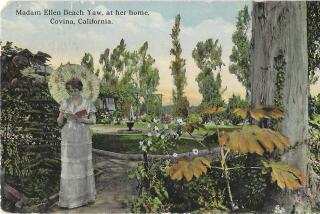The Supremes, in Good Times and Bad
The release this week of âThe Supremes,â a four-CD retrospective of the biggest-selling female vocal group of the 1960s, should have been a textbook case of marketing synergy, hitting as it originally would have amid a Supremes reunion tour.
But when Diana Ross couldnât come to agreement with former Supremes cohorts Mary Wilson and Cindy Birdsong, and instead launched the âReturn to Loveâ tour with Lynda Laurence and Sherrie Paynes (who became Supremes long after Ross left the group), the publicâs interest faded quickly and the tour was canceled. The result, no doubt, was a sour taste in the mouths of fans hoping for a first-person guided tour down Motown Memory Lane.
Thatâs a trip best left to recorded documents anyway, and this one exhaustively traces the Supremesâ long and tumultuous journey. (A fifth disc, included with the first 25,000 copies, offers live performances recorded from 1964 to 1970.)
Even more than having put out a slew of the most inviting pop singles ever, the Supremesâ crowning achievement may have been that they generated those hits during a time of dramatic civil rights advances--and tensions. The trio presented an image of three black women who were stunningly glamorous, talented and powerful.
*
*** 1/2 âThe Supremes,â Motown. For the first five years of its existence, the vocal group that started out as the Primettes seemed destined for footnote status in the pop history books.
Even after founding member Florence Ballard came up with an ambitiously glossy new name, success was still years away for her, Mary Wilson and their rail-thin, nasal-voiced lead singer, Diana Ross.
Despite the unwavering support of Motown founder Berry Gordy Jr., the Primettes never charted a hit, and they did little better with the name change--at least initially. The breakthrough was Gordyâs pairing in 1963 of the group with the then-rising songwriting team of Brian Holland, Lamont Dozier and Eddie Holland Jr.
Holland-Dozier-Holland had some success with the Supremes with a pair of singles, âWhen the Lovelight Starts Shining Through His Eyesâ and âRun, Run, Run,â but it was their recording of âWhere Did Our Love Goâ that first crystallized the Supremes sound. Among the trademarks: Rossâ assertive yet yearning vocal, Ballard and Wilsonâs sweet âbaby, babyâ harmonies and a stomping 4/4 backbeat that was closer to the sound of the Beatles than most of their American R&B-singing; peers.
It became their first No. 1 hit and began an astonishing string of chart-topping singles over the next three years. Of the dozen singles the Supremes put out during that period, only three failed to top the charts, and just one fell shy of the Top 10--âNothing but Heartaches,â which peaked at No. 11 in the summer of 1965.
If the Supremesâ symbiosis with Holland-Dozier-Holland wasnât apparent in the quick success the singers found after connecting with the songwriting team, it became painfully clear when the team left Motown in 1968 to start its own record labels.
Without it, the Supremes managed only six Top 10 records over the next eight years, and just two more chart-toppers, âLove Childâ and âSomeday Weâll Be Together.â
It wasnât that they didnât have quality writers--Ashford & Simpson, Gamble & Huff, Smokey Robinson, Stevie Wonder and Motown chief Berry Gordy himself wrote songs for the trio in the post-Holland-Dozier-Holland era.
Few of their songs for the Supremes, however, had that exquisite marriage of unforgettable melodies, emotion-laced lyrics and sparkling production work of the trioâs earlier sessions.
The times they were a-changinâ, too. R&B; music of the late â60s was moving away from the sunny sound the Supremesâ hits epitomized. Jimi Hendrix was revolutionizing rock with his astonishing guitar work, while Sly & the Family Stone, Stevie Wonder, Marvin Gaye and others were injecting more rock drive as well as social commentary into their records, rendering vocal groups as carefully groomed as the Supremes anachronistic.
Rossâ departure in 1969 for a solo career certainly hurt the groupâs profile too. The publicâs attention after the split swung largely to her as she quickly found success on her own, both as a singer (âAinât No Mountain High Enoughâ) and actress (âLady Sings the Bluesâ).
Still, with a lineup that featured Rossâ replacement Jean Terrell, Wilson and Birdsong (who stepped in after Ballard was fired in 1967), the Supremes showed they remained capable of connecting with listeners, and returned to the Top 10 with âUp the Ladder to the Roofâ and âStoned Loveâ in 1970.
The booklet accompanying the CDs provides an in-depth group history by New York writer Brian Chin and British author David Nathan, though it dances lightly over Ballardâs dismissal in 1967, which came about because she dared rock the Motown boat by complaining about the second-class-citizen treatment she felt she and Wilson got after Ross was awarded star billing.
The writers also make just passing reference to the fact that Ballard died penniless in 1976 of a heart attack, nine years after having been booted from one of the most successful pop groups of all time.
This set does a scholarly job of tracing the ups and downs of the Supremesâ career arc, but in doing so it naturally includes many of the subpar records the group released as it gradually fell from public favor.
All but the most ardent Supremes fans would undoubtedly be satisfied with a single disc--two at the most--with all the hits and a smaller sampling of the rest.
*
**** âMotown--the Classic Years,â Motown. Itâs a no-brainer that this double CD, which is packed with 40 Motown hits spanning 1959-72, would be virtually fat-free. The only source of debate for pop fans is which hits were excluded to make room for the ones that are here.
Was it vital to include Gladys Knightâs version of âI Heard It Through the Grapevineâ in addition to Marvin Gayeâs signature recording? Why represent Martha & the Vandellasâ â(Love Is Like a) Heat Waveâ instead of âDancing in the Streetâ? And how could there not be room for Stevie Wonderâs killer 1967 hit âI Was Made to Love Herâ?
Such quibbling aside, all the key players are here, from such early figures as Barrett Strong, who launched Motown as a national force with âMoney (Thatâs What I Want)â through Gladys Knight & the Pips, whose wondrously downbeat âNeither One of Usâ concludes the set.
In between are records running the gamut from the most innocent of cautionary romantic tales (the Miraclesâ âShop Around,â which introduced the world to the eloquent pen and silky voice of William âSmokeyâ Robinson) to the kaleidoscopic reflection of late â60s social upheaval that was the Temptationsâ âBall of Confusion.â Also among Motownâs remarkable artist stable represented here are the Supremes, the Four Tops, the Jackson 5, Jr. Walker, Edwin Starr, the Spinners and Mary Wells.
*
*** âThe Marvelettes--The Millennium Collection,â Motown. The labelâs big pre-Supremes vocal group warrants at least one big footnote in the annals of rock. It was the Marvelettes--which first topped the charts in 1961 with âPlease Mr. Postmanâ--that said, âNot interested,â when Holland-Dozier-Holland offered them the first shot at recording a snappy new song theyâd just written. Their decision to pass left it to the then-fledgling Supremes to take a stab at âWhere Did Our Love Go.â Though the Marvelettes never got to No. 1 after âPostman,â the Michigan group fronted by Gladys Horton maintained a frequent presence on the charts almost right up until they called it quits in 1969, with playfully infectious songs including âPlayboy,â âBeechwood 4-5789â and âDonât Mess With Bill.â
Albums are rated on a scale of one star (poor), two stars (fair), three stars (good) and four stars (excellent).
More to Read
The biggest entertainment stories
Get our big stories about Hollywood, film, television, music, arts, culture and more right in your inbox as soon as they publish.
You may occasionally receive promotional content from the Los Angeles Times.









